#irish paganism
Text

Must be rough out here for any male gods associated with love
#oengus Og#Aengus Og#Irish paganism#mythology#folktales#Cupid#I guess but not really I’m so sorry to the entirety of Hellenistic paganism#doodles#art
49 notes
·
View notes
Text
Sometimes I approach my shrines and just sort of stand there. Like, I don't pray, make offerings, or anything. I'll just stand there and look at it. Or sit next to it.
For a while, this made me feel strange and a little guilty, even. But now I look to how I do similarly with my parents. I'll just go and sit quietly with them, or go lean on them. Just take comfort in their presence.
The Gods ARE our divine parents, after all.
#hellenic deities#hellenic polytheism#pagan#hellenismos#greek polytheism#hellenic gods#altar#irish paganism#polytheism#irish mythology#celtic paganism#celtic polytheism
477 notes
·
View notes
Text

Another Lugh-inspired drawing. He’s easy to go for inspiration, especially right now when things are feeling their craziest.
561 notes
·
View notes
Text
Important Facts about Samhain from an Irish Celtic Reconstructionist
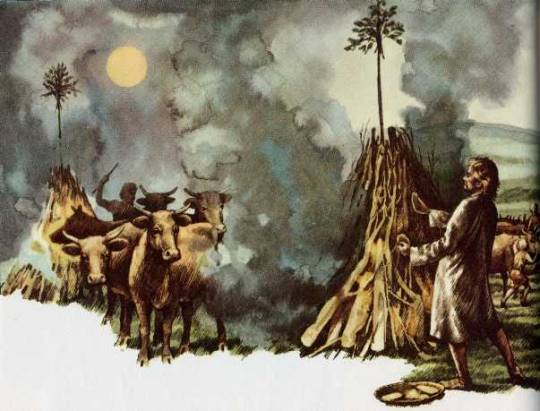
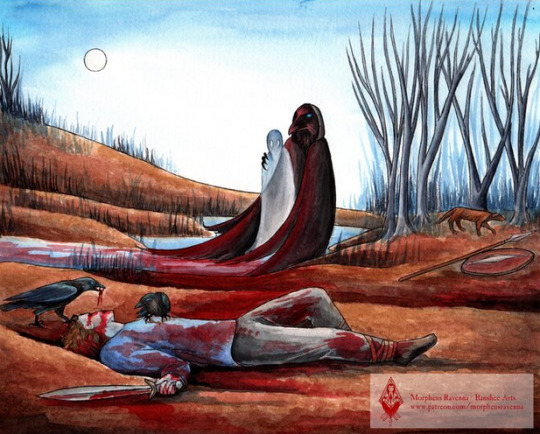

Pronunciation
SOW-in or SOW-een ~NOT~ Sam-han, Sam-win etc.
Dates
Most reconstructionists celebrate Samhain on Oct 31-Nov 1, however some may choose to celebrate on Gregorian Nov 13-14 as this would match the Julian dates of Oct 31-Nov 1. Some also believe that it was a three day festival spanning Oct 31- Nov 2 on which Nov 2 is specifically devoted to ancestral veneration, but there is no specific evidence of this, only possible extrapolation from more modern practices.
Following the Celtic method of days beginning at sunset, regardless of the specific dates you choose to celebrate on your festivities should begin at sunset and end at sunset.
Importance in the Mythos
Ná Morrighan has a strong connection to this time of year thanks to the story of Cath Dédenach Maige Tuired (The Last Battle of Mag Tuired) in which she is found depicted as the ‘Washing Woman’ (sometimes washing herself in the river and other times washing the bloodied armor of the soldiers that would die that day), on the eve of the battle which is also Samhain. The Dagda approaches her and couples with her (creating the ‘Bed of the Couples’ along the bank of river and granting Dagda her blessing in the battle to come). This encounter seems to over emphasize the liminality of the encounter by taking place during the changing of the year and with the couple each standing with ‘one foot on either bank’ of the river.
She and her sisters (Badb and Macha) then use various forms of magic to rain destruction on their enemies (in the form of fire and blood). After the day is won Morrighan speaks a prophecy that describes what is taken by some to be the end of days and others to be the events which will later lead to the Ulster Cycle.
Beneath the peaceful heavens lies the land.
It rests beneath the bowl of the bright sky.
The land lies, itself a dish, a cup of honeyed strength, there, for the taking, offering strength to each
There it lies, the splendour of the land.
The land is like a mead worth the brewing, worth the drinking.
It stores for us the gifts of summer even in winter.
It protects and armours us, a spear upon a shield
Here we can make for ourselves strong places, the fist holding the shield
Here we can build safe places, our spear-bristling enclosures.
This is where we will turn the earth. This is where we will stay.
And here will our children live to the third of three generations
Here there will be a forest point of field fences
The horn counting of many cows
And the encircling of many fields
There will be sheltering trees
So fodderful of beech mast that the trees themselves will be weary with the weight.
In this land will come abundance bringing:
Wealth for our children
Every boy a warrior,
Every watch dog, warrior-fierce
The wood of every tree, spear-worthy
The fire from every stone a molten spear-stream
Every stone a firm foundation
Every field full of cows
Every cow calf-fertile
Our land shall be rich with banks in birdsong
Grey deer before Spring
And fruitful Autumns
The plain shall be thronged from the hills to the shore.
Full and fertile.
And as time runs its sharp and shadowy journey, this shall be true.
This shall be the story of the land and its people
We shall have peace beneath the heavens.
Forever
(based on the translation by Isolde Carmody)
It is also mentioned in Echtra Cormaic that on this festival every seven years the high king would host a feast, it was at this time new laws could be enacted. (but it seems that individual Tuathas or possibly kings of the individual providence may have done this for their territories at Lughnasadh).
It seems to be a time considered especially susceptible to (or of) great change as it is the time which the Tuatha de Danann win victory over the Formorians and take control of Ireland, the invasion of Ulster takes place at this time in Táin bo Cúailnge, in Aislinge Óengusa Óengus and his bride-to-be are changed from bird to human and eventually he claims kingship of Brú na Bóinne at this time of year.
Celebration Traditions
Samhain is the beginning of the “dark half” of the year and is widely regarded as the Insular Celtic equivalent of the New Year. The “dark half” of the year was a time for story telling, in fact in this half of the year after dark is considered the only acceptable time to tell stories from the mythological and Ulster cycle (the Fenian cycle being assumed to be no older than the 12th century based on linguistic dating). Traditionally anything that had not been harvested or gathered by the time of this festival was to be left, as it now belonged to the Fae (in some areas specifically the Púca).
This was also an important time for warding off ill luck in the coming year. Large bonfires would be built and as the cattle were driven back into the community from the pastures they would be walked between these bonfires as a method of purification (the reverse custom of Bealtaine where the livestock were walked between the fires on their way out to the summer pastures). Assumed ritualistic slaughter of some of the herd would follow (though this perhaps had the more practical purpose of thinning the herd before the winter and creating enough food for the feasting). In some areas the ashes from these fires would be worn, thrown or spread as a further way to ward off evil.
Homes would be ritualistically protected from the Aos Sí (Fae or ‘Spirits’) through methods such as offerings of food (generally leaving some of the feasting outside for them), carving turnips with scary faces to warn them off (we now tend to do this with gourds), and smoke cleansing the home (in Scottish saining) traditionally with juniper, but perhaps rowan or birch might be an acceptable alternative. It is likely these would be part of the components used in Samhain bonfires as well, for the same reason.
Lastly based on later traditions as well as links in the mythology this is a time where divination practices or those with the ‘second sight’ were regarded to be especially potent.
Art Credit @morpheus-ravenna
#samhain#irish#irish mythology#irish polytheism#irish paganism#celtic reconstructionism#celtic paganism#celtic polytheism#na morrigna#the morrígan#the dagda#fire festival#blackcrowing#Irish reconstructionist
449 notes
·
View notes
Text
pro deity worship/low energy tip:
you CAN watch tv with/for your deities! and devote it to Them! and use that devoted time as an offering!
your offerings don’t exclusively HAVE to be physical or even only “things that would have been offered at the inception of the religion”. quality time is an offering. and TV (or movies!) can be quality time. as someone who is autistic/disabled, sometimes that’s all I can give (and I’m biased in that TV is my special interest, lol.)
examples:
for The Morrigan, I watch shows about killers, mediums, ghosts, and powerful groups of women. if I’m watching movies, I lean towards Irish horror movies or movies about spirits. sometimes just general dark fantasy movies. examples include Practical Magic (movie), The Hallow (movie), Hannibal (movie series or show but especially show), Psychic Kids* (reality show)
for Hermes, I watch things that are both funny and interesting/educational/informative. if I’m watching movies, I lean towards comedy romps (especially that involve travel) or biopics. examples include We Are The Millers (movie), Rocketman (biopic movie), Hart to Heart (comedy/interview show), Jeopardy!* (educational game show)
for Hades, I watch any and all horror movies, especially those with an afterlife component. if I’m watching shows, I tend to lean towards dark/kooky spooky cartoons. examples include Beetlejuice (movie or show but especially movie), The Cleansing Hour (movie), The Grim Adventures of Billy and Mandy (cartoon show), Courage the Cowardly Dog* (cartoon show)
for Persephone, I tend to watch anything old, spooky, heartfelt, and aesthetically beautiful. if I’m watching movies, I lean towards dark musical films or romantic movies with a horror twist (bonus points for horror, comedy, and romance all in one). examples include Deathgasm (movie), The Corpse Bride (cartoon musical movie), Elvira’s Movie Macabre (horror movie commentary show), The Munsters* (show)
I put a * next to the programs that I feel They’ve loved the most and have felt truly deep connection with Them over! please feel free to get weird with it, experiment, find what works for your worship. and maybe in the reblogs or tags, tell me what you’ve been watching and who you’ve been watching it with!
#the wolf speaks#paganblr#pagan#paganism#eclectic paganism#helpol#hellenic paganism#hellenic pagan#hellenic polytheism#polytheism#irish paganism#celtic paganism#irish pagan#celtic pagan#the morrigan#hades#persephone#hermes#the morrigan deity#hades deity#persephone deity#hermes deity
243 notes
·
View notes
Text

Manannán mac Lir getting ready to remove someone's head.
#manannan mac lir#orbsen mac allot#tuatha de danann#irish mythology#celtic mythology#celtic paganism#samhain#artists on tumblr#inktober day 26#inktober 2023#inktober#celtober#celtober 2023#irish paganism#my art#irish folklore#aodhan erbnen
262 notes
·
View notes
Text
I love that Celtic mythology and paganism are open but I implore people to pleeeease learn from actual Irish people teaching the culture and remember that these are still indigenous practices that have been nearly erased by colonialism.
#witchblr#witches of tumblr#witchcraft#witch community#pagan#paganism#neo pagan#celtic paganism#irish paganism
231 notes
·
View notes
Text
We have pop pagan music
So last week I made a post about how we as pagans don't really have pop music to listen to that relates to our beliefs and myths. All pagan music is pretty much folk, metal or reenactments of ancient and medival music. Nothing wrong with it, but some of us like to be basic from time to time.
Then I realised... That's not true. There's plenty of pop songs that reference the gods and the myths even though the singers themselves may not be polytheists and that's why I created this playlist. Here you can listen to mostly upbeat but also some pop ballads that you could relate to as a polytheists.
Of course I'm accepting recommendations but please only recommend songs of genres that are pop-adjacent (pop, pop-rock, K-pop, J-pop, dance pop...) or mainstream (r&b, rap, trap, hip hop). It'd be especially thankful in recommendations from other faiths like Kemetism, Norse, Celtic, etc. since I don't know much about those. Any language is good.
#paganblr#paganism#polytheist#helpol#witchblr#hellenic polytheism#roman paganism#pagan music#religio romana#norse paganism#germanic paganism#kemetism#irish paganism#slavic paganism#Spotify
92 notes
·
View notes
Text
Protecting home and fortune: Irish folk customs for Bealtaine
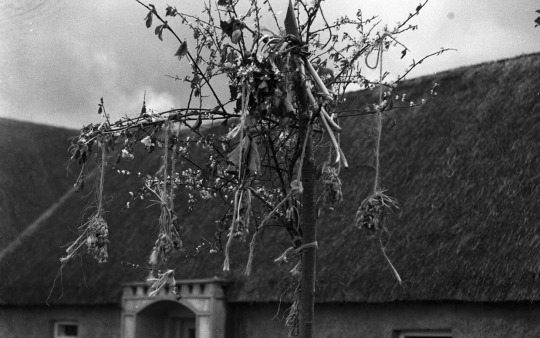
Bealtaine, also known as May Day, marked a pivotal point in the Irish calendar. It signified the arrival of summer, a time of light, warmth, and the promise of a bountiful season ahead. However, Bealtaine also held a sense of unease. This was a time when the boundary between our world and the Otherworld thinned, inviting the potential for both blessings and misfortune from the unpredictable Good Neighbors. To navigate this delicate balance, people turned to time-honored traditions and a heightened awareness of the risks of everyday life.
Appeasing the Good Neighbors
On Bealtaine, it was widely believed that the Good Neighbors became particularly active. To ensure their goodwill and prevent them from causing mischief, people would leave out food and drink as offerings. The belief was that the the Good Neighbors were attracted to these offerings and would be less likely to cause trouble if they were satisfied.
You all know May is the month of the fairies. Great people or men that lived long ago rises from their graves on every night in the month of May to fight the old battles that they fought long ago these men are called fairies. The bad fairies do great harm and trouble in the month of May they kill cattle take away milk and butter from the cows and alot of other mischief. Source
"The fairies come around our houses too to do mischief as well as they come to the cattle; you should sweep the hearth very clean and leave food aside for them. If you don't the fairies will come when you are asleep and will torment you by tricking you or pinching you." Source
Primrose
Primrose was believed to ward off the Good Neighbors, and scattering them in the doorways and window sills of the home created a barrier no troublesome spirit could cross.
"During the first three days [of May] fairies entered the house. They came disguised as old men or women in order to steal coals and in order to prevent them primroses were scattered on the doorway no fairy could pass this flower." Source
"The best preventive of fairy power was to scatter primroses on the threshold, for no one could pass the flowers and and the house and house-hold were left in peace." Source
"Guard the house by a string of primroses across the door on the first three days of May. The fairies can pass neither over nor under the string." Source
Rowan
This tree was seen as potent protection against otherworldly forces. A branch hung above a cow's stable door could ward off those who might steal the milk, ensuring the cow's blessing for the year. Branches decorated with spring flowers were also placed around the house for a bit of extra good luck.
On May Day before sunrise the eldest member of the family gets up, he goes out, pulls a branch of the rowan tree and hangs it over the cow's stable door. This is done to prevent the fairies from taking any of the milk from the cows. Source
Another custom is to get a branch of Rowan tree and decorate it with may flowers and primroses and leave it in the middin standing. Then strew may-flowers into each outhouse door and on the doorstep and in the windowsills. This is to welcome the good fairies so that there will be good luck round the year. Source
If you put a rowan tree up the Chimney nothing can bring the butter out of the house. Source
The May bush: blessing and protection
The May bush was a common custom in Ireland, particularly in Leinster, South and West Ulster, and some areas of Munster and Connaught. The May bush often featured hawthorn branches brought home and decorated with flowers, ribbons, and colorful eggshells saved from Easter.
The May bush was believed to protect the home from evil spirits, particularly fairies and witches. It was also thought to bring good luck and prosperity, especially in relation to milk and butter production.
It is a great custom also to make a May bush on May day. This consists of a bush, which is put standing in the dungpit. The bush is decorated with flowers and eggshells. The eggshells are kept after Easter Sunday. Source
On May morning a Maybush was placed outside each house. It usually was a yellow furze bush with a number of eggshells stuck on the thorns. Source
The people around this place make May-bushes on the first of May. They pull a bush and gather flowers and tie them on to the bush with strings and stick it on the ground and after that they say their prayers around it to honour our Blessed Mother and they make a little Altar and put flowers every day on it during May. The people long ago used to make May-bushes and they also used to make a little Altar. Source
The evening before the first of May the people go out and get a piece of a certain tree which they call May Pole. They put this bush outside the door and they put all the egg shells they had on Easter Sunday on it. They also put a lot of flowers out side too. If the people do not put up the May Pole the fairies will come. They also tie May Pole to the cow's tail and if they do not, the fairies come and take the milk from the cow. Source
Guarding your luck
Bealtaine is a time that came with a heightened fear that any careless act could invite bad luck for the whole year. During Bealtaine, even seemingly simple acts held risk.
Giving away even staples like milk, butter, or coins risked also surrendering your good fortune. Lending a tool or sharing even a hot coal from your hearth could lead to unexpected misfortune.
On May eve no one cares to give away any milk or butter fearing their luck would be taken. Source
Long ago the people used to have a large number of pisreogs on May day...They would not give away anything to anybody on May day, only to a beggar man. When he would come in they would give him great welcome. They would say he was bringing in the good luck. The old people would not allow anybody to bring fire outside the door. Everybody would have matches on May day. The old people would not allow any fire outside the door. Source
On May Eve or May Day nothing is given out of the house. Source
They considered it unlucky to give butter or milk way to any person on May Day as they would be giving away their luck. No stables were to be cleaned out on that day. The first person to go to the well in the morning was supposed to have luck for the rest of the year. It is not right to give money to anyone on that day. But if you get money on that day you will be getting it for the year. Source
The people of the house do not put out the ashes on that day or if a person asked for a coal they would be refused. Source
Another custom of the Irish, they would not lend any article or give either milk or food even to beggars. They would not light a fire on May Day until it was late in the day for fear that the people would see the smoke and would bring the butter. Source
The customs surrounding Bealtaine offer a fascinating glimpse into the rich tapestry of Irish folklore and the enduring human desire to shape our luck through ritual and tradition. Whether leaving offerings to appease unseen spirits, scattering flowers as wards against misfortune, or cautiously guarding their possessions, people sought to influence the unseen forces that shaped their lives. These traditions, born in a different time, speak to a fundamental human desire for control, for a sense of agency in the face of an uncertain world. While the specific fears and beliefs may have shifted, the impulse to use ritual and superstition as a means of navigating life's unpredictability remains surprisingly relatable.
#Bealtaine#beltane#may day#irish folklore#celtic paganism#irish paganism#irish pagan#pagan#paganism#witchcraft#witchblr
63 notes
·
View notes
Text
Semi-regular reminder that Gaelic polytheism is not a closed practice. You do not need to be from Ireland, Scotland, or Man or have any “Celtic blood” to worship the Gods, Ancestors, and Spirits
Anyone who tells you different is misinformed at best or probably a racist at worst
185 notes
·
View notes
Text
Just to make something clear, Gaelic paganism (and folk practices) is not closed, you do not need any initiation and anyone telling you need "celtic" blood is just a racist. Anyone in the world from anywhere in the world can do it.
That doesn't mean you can pick and choose what words and figures you like from it, remove them from their original contexts, add nonsense information and claim it as fact (UPG should always be labeled as such especially if its in complete opposition to established lore). And then claim these terms and ideas actually have nothing to do with Ireland, The Isle of Mann and Highland Scotland. This is appropriation. Especially when this is all being spearheaded by English people in the 50s.
#irish paganism#irish mythology#celtic paganism#i promise thats the last one#i have gotten off my highhorse#paganism#so many people around the globe practice various froms of celtic spirituality in a way thats respectful but also personal and unique to the#it is possible people do it#there are some great blogs on tumblr even from the usa canada Argentina etc#tae#mine#also living culture is important
391 notes
·
View notes
Text


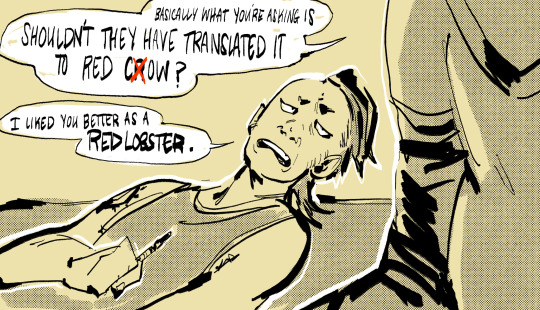
Anyway lobster Bodb Derg jumpscare
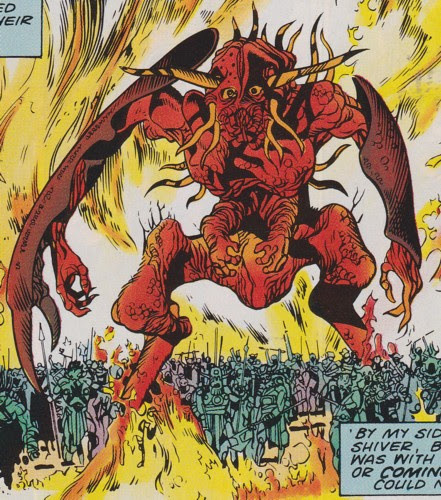
#Bodb Derg#Bodb Derg deity#Irish mythology#irish paganism#folklore#mythology#this was a productive conversation#comic#doodles#my art#jokes so bad I took off my glasses shut up#continuity who
38 notes
·
View notes
Text

Painted Brigid because ofc
This is my January monthly postcard if anyone wants one btw! Sign up here before February 6th
#brigid#goddess brigid#celtic mythology#irish mythology#irish myths#celtic polytheism#imbolc#imbolg#spring#artists on tumblr#irish folklore#irish paganism#brighid#goddess#illustration#original illustration
465 notes
·
View notes
Text
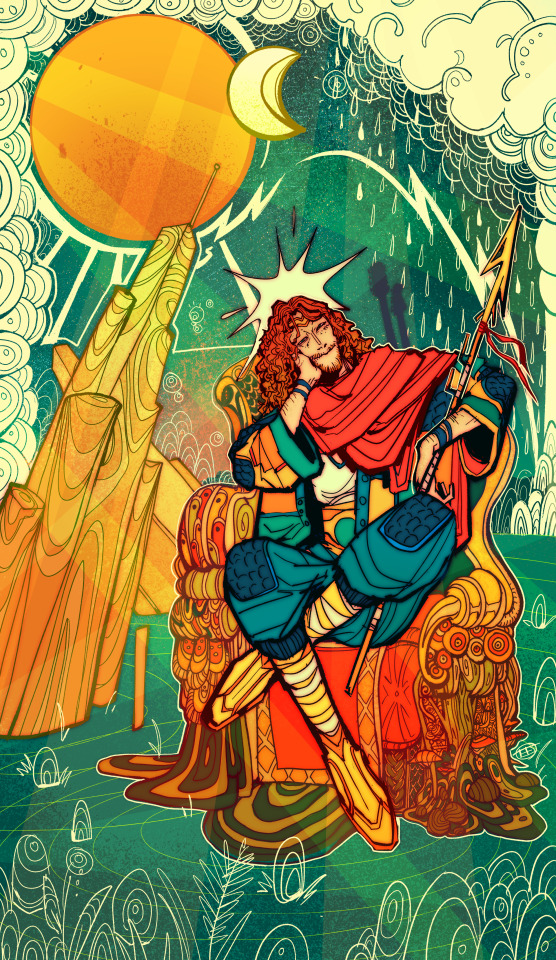
Been wanting to make more work based on Irish paganism and its stories (sort of a blending of jobs hahaha), so I started with an obvious option for me.
Lugh, master of many skills! The "many skills" bit comes in handy for work and an endless sea of special interests, for sure.
#lugh#lugh deity#irish paganism#celtic polytheism#irish polytheism#polytheism#deity work#paganism#illustration#digital art#doodles
536 notes
·
View notes
Text
Blackcrowing's Irish Pagan Festivals Master Post
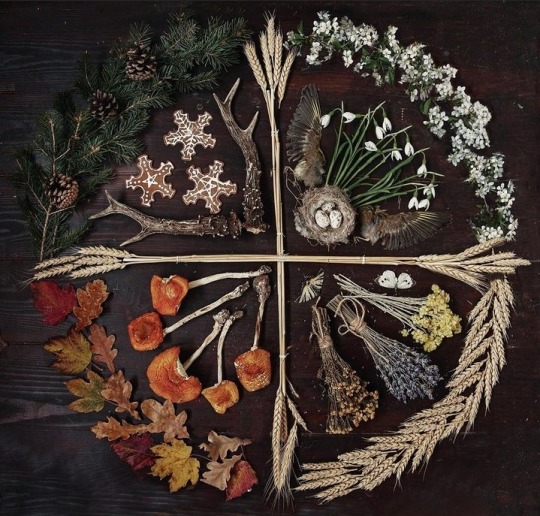
Samhain Festival
Samhain Authentic Foods
Imbolg Festival
Imbolg Authentic Foods
Bealtine Festival
Bealtine Authentic Foods
Lughnasadh Festival
Lughnasadh Authentic Foods
Art Credit - Familiar_flower
#lughnasa#lúnasa#lughnasadh#bealtaine#Baltaine#Beltane#imbolg#imbolc#fire festivals#fire festival#irish#irish mythology#irish polytheist#irish polytheism#irish pagan#irish paganism#irish reconstructionism#irish reconstructionist#celtic#celtic mythology#celtic pagan#celtic paganism#celtic polytheist#celtic polytheism#celtic reconstructionist#celtic reconstructionism#blackcrowing#samhain#pagan#paganism
159 notes
·
View notes
Text
Pagan Wedding Flowers (and other plants) Cheat Sheet
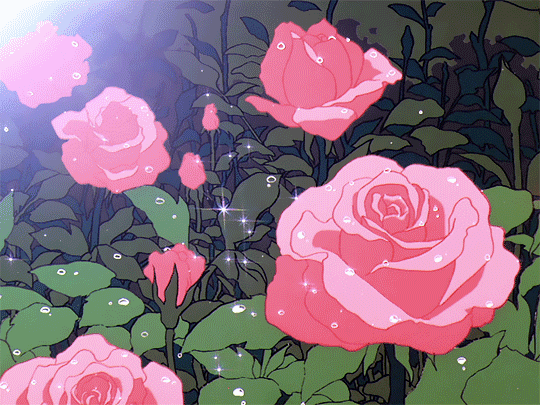
Flowers have been associated with weddings for almost as long as humans have been getting married. In fact, the use of flowers in ritual may actually be older than humans! Neanderthal graves in Iraq suggest that Neanderthals buried their dead with flowers. There are mentions of flowers in our earliest recorded accounts of weddings, such as in Egypt, Greece, and Rome.
Historically, couples would have used whatever flowers were available to them. While some cultures had flowers they preferred for weddings because of their symbolism, couples would have been limited by what grew in their area and by what was in bloom at the time of their ceremony. To be truly as historically accurate as possible, consider using flowers you grew or foraged yourself. Bonus points for native blooms!
For those who aren't into growing or gathering your own wedding flowers, modern florists and greenhouses allow us to choose from a wide range of flowers, many of which aren't native to our homes. This makes it much easier to choose flowers based on their symbolism, history, or cultural meaning.
Historic Wedding Flowers + Plants
Roses have been the flower of choice for Western weddings pretty much forever, and with good reason. The rose is associated with several ancient goddesses of sex, fertility, and/or romance, such as Inanna, Ishtar, Aphrodite, and Venus. (Later, medieval Christians would also associate this flower with the Virgin Mary.) Including the goddess's flowers in a wedding may have been a way of invoking her blessing on the union. Sappho called rose "Queen of the Flowers."
Roses are held in a high regard in pretty much every culture with access to them. They're strongly associated not only with love, but also with beauty, wholeness, blessings, and even spirituality.
Rose was included in wedding celebrations in Ancient Hellos (Greece) and Rome. It is associated with the planet Venus and the water element.
Wheat was also a popular inclusion in weddings in ancient Greece and Rome. Hellenic brides would carry sheaths of wheat or another grain to invoke fertility and good fortune. Wheat was strongly associated with agrarian goddesses like Demeter, Persephone, Ceres, and Proserpina. Carrying wheat may also have been a way of expressing a wish for the marriage to produce many children. Pliny the Elder explicitly says in his Natural History that wheat was included in weddings to honor Ceres.
In modern occult systems, wheat is associated with fertility, the conception of children, and wealth. It is associated with the planet Venus and the element of earth.
Olive branches also featured in Hellenic weddings. Olive was an important crop in the ancient Mediterranean, and olive branches were a symbol of peace and friendship. Olive was also used in the victors' crowns in the Olympic Games. In Athens, the olive tree was a symbol of Athena. It was also carried by worshipers of Apollo when they visited the Oracle at Delphi. Olive was also important to the Romans, who associated it with Mars in his aspect as a protector of peace.
In modern magic traditions, olive is associated with beauty, healing, stamina, wealth, fertility, protection and of course, peace. It is associated with the sun and the fire element.
Orange blossoms were included in Hellenic weddings as a sign of happiness. These strongly scented white flowers also sometimes appeared in Roman weddings. Thousands of years later, Queen Victoria wore a crown of orange blossoms at her wedding, but for her they were a symbol of chastity.
In modern systems, orange is associated with joy, partnership, sweetness, and good luck. It is associated with the sun and the fire element.
Hawthorn appeared in weddings in ancient Rome. Pliny the Elder said that Roman bridal processions included a hawthorn torch dedicated to the goddess Ceres. In Rome, hawthorn was more generally associated with love and good luck.
In Celtic cultures, especially Ireland, hawthorn was believed to be a fairy tree. For this reason, cutting a hawthorn tree or bringing hawthorn branches inside was considered bad luck.
The blooming of hawthorn trees was used to determine the date of Bealtaine, and hawthorn boughs were often decorated with flowers, ribbons, and egg shells to make a May bush, which was placed by the front door for good luck. In Britain, hawthorn wood was used to carve maypoles. Hawthorn flowers may be especially appropriate for a May wedding or handfasting.
In modern occultism, hawthorn is associated with protection, healing (especially healing the heart), romantic love, fertility, granting wishes, and happiness. It is still strongly associated with weddings and marriage. It is associated with the planet Mars and the fire element.
Lotus may have featured in ancient Kemetic (Egyptian) weddings. The lotus was an important symbol in Kemetic religion, and was associated with the sun, rebirth, and the creation of the world. Lotus flowers featured in festivals to honor Hapi, the androgynous god of the Nile. The lotus is used in art to represent Upper Egypt. An Egyptian poem from 1100 BCE connects the lotus to marriage.
Lotus flowers were also popular in ancient Chinese weddings, and they're still used by some Chinese couples today. In Chinese culture, lotus represents purity, honor, and long life.
In modern traditions, lotus is associated with protection, spirituality, and blessings. It is associated with the moon and the water element.
Yellow flowers were used in pre-Christian Ireland for blessings and protection. The exact flower used for these rituals is not specified, so it seems like the color was what mattered. Modern pagans looking to carry on this tradition have lots of yellow flowers to choose from. Some popular choices include yellow roses (see above), yellow amaryllis (associated with creativity, playfulness, and joy), chrysanthemum (associated with long life, optimism, and protection), marigold (associated with happiness, rebirth, and vitality), and/or daffodils (associated with love, fertility, and luck).
Modern Wedding Flowers
We've gone over some of the flowers that were popular in historic pagan weddings, but it's also easy to pagan-ify the flowers that are most popular in modern weddings. Here's a quick rundown of some popular wedding blooms and their neopagan and occult symbolism:
Peony is associated with purification, healing, prosperity, and success. In ancient Rome, peony was believed to be sacred to Mars. It is associated with the sun and the fire element.
Dahlia is associated with mystery, occult wisdom, and transformation. It is associated with the moon and the water element.
Lilac is associated with balance, peace, romance, protection from evil, and attracting friendly spirits. It is associated with Venus and the water element.
Sweet Pea is associated with comfort, charm, and sweetness. It is associated with Venus and the water element.
Hydrangea is associated with healthy boundaries, breaking negative patterns, hex breaking, and protection. It is associated with water and with both the moon and Neptune.
Tulip is associated with beauty, desire, gratitude, love, prosperity, and simplicity. It is associated with Venus and the earth element.
Orchid is associated with beauty, elegance, sexuality, fertility, and romance. It is associated with Venus and the water element.
Lily is associated with spirituality, beauty, harmony, and protection from the evil eye. It is associated with Venus and the water element.
Carnation is associated with beauty, love, rebirth, strength, and healing. Carnations are associated with same-gender love and especially love between men because of Oscar Wilde's fondness for them. They are associated with the sun and the fire element.
Gardenia is associated with love, peace, healing, and spirituality. It is associated with the moon and the water element.
Resources:
"New Neanderthal remains associated with the ‘flower burial’ at Shanidar Cave," Cambridge University Press
"History of Wedding Flowers" by Benna Crawford
The Roman Wedding by Karen K. Hersch
"The Olive in the Ancient Mediterranean" by Mark Cartwright
"The History, Mythology, and Offerings of Hawthorn" by Meghan Pivarnik
Where the Hawthorn Grows by Morgan Daimler
Temple of the Cosmos by Jeremy Naydler
The Magic of Flowers by Tess Whitehurst
The Magic of Trees by Tess Whitehurst (see my disclaimer about Whitehurst's books, but these are some of her better ones)
Cunningham's Encyclopedia of Magical Herbs by Scott Cunningham
#the great handfasting project#handfasting#pagan wedding#wedding magic#queer wedding#pagan#paganism#pagan witch#hellenic polytheism#hellenism#religio romana#cultus deorum#roman polytheism#kemetic paganism#kemetic polytheism#irish paganism#irish pagan#irish folklore#wicca#wiccan#flowers#flower magic#correspondences#love magic#love spell#green witchcraft#green witch#witch#witchblr#witchcraft
502 notes
·
View notes